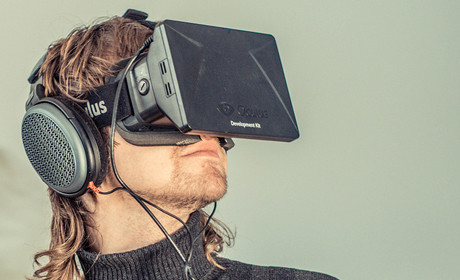
"In two years from now, when an event happens like the Boston Marathon bombing and people want to see the aftermath, they're not going to watch it on video, they're going to want to put on a headset and be there."
Virtual reality pioneer Nonny de la Peña said virtual reality is "just another platform, and one that's here to stay", speaking at the GEN summit yesterday.
And as the number of VR headsets available on the consumer market is growing, there's space for media organisations to create stories on this new platform.
The time required to produce a VR experience might also not be as long as you'd imagine. De la Peña's team recreated the scene of the shooting of teenager Trayvon Martin in two weeks, with just one person working full-time and two working part-time.
The project saw the team gather factual information, such as 911 calls and full architectural drawings of the apartment complex at the scene, to recreate the events in a virtual environment – and De la Peña said the process would have taken a matter of days had she had more people working on it full time.This is something that can change people's attitude to journalismLouis Jebb, Immersiv.ly
"I can guarantee you that the kids who are playing Minecraft now are so comfortable with that digital environment. And they're gonna grow up very soon and they're gonna expect a place that they can go to that is a virtual experience," she explained.
Connecting mainstream media with disenfranchised audiences is the thought that brought Louis Jebb to found Immersiv.ly, a start-up that produces editorial content for virtual reality.
Immersiv.ly was initially an explainer website, Jebb said at the GEN Summit, and virtual reality came into play when Facebook bought Oculus Rift last year.
"The problem we're trying to solve is that, for a lot of people, journalism isn't part of their daily life.
He said part of the problem was the media's age-old tendency to exaggerate and sensationalise topics, as well as a sense of rivalry with competitors in the media space that might lead a news organisation to lose sight of "what the user actually wants out of news journalism".
While explainer journalism can establish a connection with the audience, as highlighted by the success of sites such as Vox.com who operate on this principle, Jebb said VR was "the missing brick in the wall".
With virtual reality journalism, people can not only be in the middle of the action, but they can have a sense of agency and ability to make their own decisions on what to look at within the report.
"That is something that can change people's attitude to journalism," he said.
VR headsets might be first and foremost gaming consoles, but Jebb said they could also be "the way to get the younger generation, our future leaders, to buy into mainstream news."
A generation that might be on the platform primarily for gaming could find a way to news "that otherwise they would never have had".
Join us at the next news:rewired digital journalism conference in London in July, where we'll be discussing virtual reality with Jessica Yu, global head of visuals at The Wall Street Journal, and more speakers to be announced soon. Tickets are going fast so secure your place now.
Free daily newsletter
If you like our news and feature articles, you can sign up to receive our free daily (Mon-Fri) email newsletter (mobile friendly).
Related articles
- Tip: Create engaging content for millennials
- Weekly journalism news update: Memes, mobile journalism and millennials
- What do millennials and Gen Z want from the news? Convenience and hard-hitting content
- Al Jazeera uses 360-video to show the scale of destruction in Yemeni civil war
- BBC uses immersive video to show life of Madagascan women imprisoned for crimes committed by their male relatives











